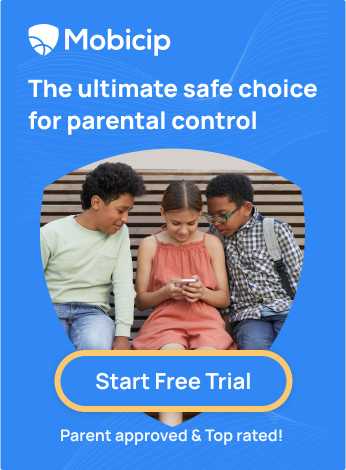What Is Doomscrolling and How Does It Affect Kids?

The Cambridge Dictionary defines doomscrolling as “the activity of spending a lot of time looking at your phone or computer and reading bad or negative news stories.” Most of us know the feeling—opening our phones for a quick update and suddenly realizing we’ve spent half an hour stuck in a stream of gloomy headlines.
“Doomscrolling is like having a bottomless drink at a restaurant, it just keeps refilling with no natural end point,” says Parven Kaur, Founder of Kids N Clicks, a digital platform that provides resources and information to help children and families navigate the digital world safely. “Unlike TV shows that finish and give you a moment to decide what’s next, social media feeds are designed to keep users scrolling indefinitely,” she adds.
Doomscrolling became especially widespread during the COVID-19 pandemic, when people were glued to their screens for constant updates, and the habit has stuck around in today’s always-on digital world. No surprise that the Oxford English Dictionary picked “doomscrolling” as its Word of the Year in 2020.
And the numbers show just how common it is. A 2024 survey found that about one in three American adults doomscroll regularly. Among younger adults, the habit is even stronger: 46% of millennials and 51% of Gen Z admit they can’t stop scrolling once they start.
But what happens when kids fall into this pattern? That’s where it gets more concerning. Children are naturally curious, and with limited life experience, they don’t always know how to process what they see online. The internet offers them a window to the world, but it’s not a window designed for them. When doomscrolling pulls kids in, it doesn’t just waste time—it can quietly shape how they think, feel, and even see the world around them.
This is where tools like Mobicip can help. As a parental control and screen time manager, it supports families in setting healthy digital boundaries and reducing the risks of endless scrolling.
In this article, we’ll look at why doomscrolling is so addictive, how it affects kids differently from adults, and what parents can do to protect their children’s well-being—both with practical strategies and the right digital tools.

Why is Doomscrolling a Serious Problem for Kids?
Parven Kaur says that while doomscrolling is a challenge for everyone, kids are especially at risk. Unlike adults, they don’t yet have the maturity or perspective to filter what they see online.
“Most digital platforms aren’t designed with children in mind, which means it’s alarmingly easy for them to stumble onto content that is inappropriate, frightening, or simply overwhelming. Without strong coping skills, the constant exposure to bad news can take a real toll on their emotional health and worldview. In addition, many children engage in doomscrolling to seek validation or a sense of social relevance, checking that they are aware of what peers are talking about or that they “know” what’s happening in the world, which can further reinforce the habit and heighten stress,” says Kaur.
Attention Economy
At the heart of doomscrolling lies the “attention economy.” Social media and news platforms compete for one thing—our attention. The more time we spend scrolling, the more ads they can show us, and the more data they can collect. For children and adolescents, this cycle is even harder to break. Their natural curiosity, combined with the desire to feel safe or stay “in the know,” makes them especially vulnerable to the pull of endless negative content.
The Developing Brain
Children’s brains are still wiring up important skills like self-control, emotional regulation, and critical thinking. When they’re repeatedly exposed to alarming news or distressing posts, it can shape how they process stress and perceive the world. Because they lack life experience and online safety skills, they are more likely to take what they see at face value. The impact isn’t just temporary—it can leave lasting impressions on their mental and emotional development.
Behavioral Mechanics
Doomscrolling doesn’t happen by accident. Platforms are designed to keep users engaged through endless feeds, algorithmic reinforcement, and variable reward systems (like surprise updates or shocking headlines). Every scroll holds the promise of something “new,” tricking the brain into thinking the next piece of information might be important. For kids, resisting this cycle is even harder because their self-regulation skills are still developing.
The Algorithmic Trap
Persuasive design is built into every platform. Algorithms quickly learn what content keeps users hooked and then serve up more of it. For a child scrolling through updates on war, disasters, or crime, this means their feed becomes saturated with more of the same. What starts as casual browsing can quickly spiral into hours of exposure to negative, often traumatic content—without the child even realizing how deeply they’re being pulled in.
Why Kids Are Vulnerable to Doomscrolling
Psychological factors also play a big role. Kids may feel:
- Control: Believing that staying on top of negative news helps them feel more secure about their own lives.
- Curiosity: A natural interest in shocking or scary stories, much like the popularity of true-crime shows.
- FOMO: A fear of missing out on what peers are talking about, especially when scary events dominate conversations.
The Neurochemistry of Doomscrolling
Every scroll triggers the brain to respond, almost like spinning a wheel of chance. Sometimes the result feels rewarding, other times stressful—but each spin adds to the overall load.
- Dopamine highs: Positive or entertaining posts spark dopamine release, giving a quick sense of pleasure or satisfaction.
- Cortisol spikes: Disturbing headlines or negative content release cortisol, the body’s main stress hormone.
- The Doom Spiral: The constant switch between dopamine and cortisol creates a cycle where the brain keeps seeking rewards, even as stress builds.
- Stress accumulation: Over time, cortisol doesn’t simply disappear; it lingers, raising anxiety and leaving the body in a heightened state of alert.
- Ripple effects on health: In kids and teens, whose brains are still developing, this pattern can affect sleep, mood, concentration, and even how they process emotions.
In short, doomscrolling tricks the brain into thinking it’s staying informed and engaged. But beneath the surface, it quietly reinforces a loop of highs and lows that can take a toll on overall well-being.
Mental Health Impacts on Children
Kaur says, “What’s particularly concerning is how algorithms can trap children in negative cycles. This creates a digital bubble of negativity that can seriously impact their mood and mental health during important growth periods.“
Negative Thought Loops and Catastrophizing
Doomscrolling doesn’t just show children the world—it often paints it in the darkest possible colors. The constant stream of negative stories can:
- Reinforce negative thought patterns, making children expect the worst.
- Encourage catastrophizing—where even small problems feel overwhelming.
- Leave them in a cycle of fear and worry that’s hard to break.
For example, a child who sees repeated headlines about natural disasters might start worrying that their own town will be next, even without any real risk.
Long-Term Risks of Doomscrolling
Over time, doomscrolling isn’t just about a few bad evenings. Its impact stretches further:
- Emotional exhaustion from constant exposure to distressing content.
- Heightened anxiety, making it harder for children to feel calm or safe.
- Reduced resilience—the ability to bounce back from setbacks.
A child who spends hours reading about crime reports may carry a constant sense of unease and tension, even in safe settings.
Cognitive and Behavioral Consequences
The design of digital feeds—with rapid updates and endless scrolling—shapes the way children think and behave:
- Shrinking attention spans: Jumping quickly between short posts and videos makes it harder to focus on longer tasks like homework or reading.
- Decision fatigue: Constantly choosing what to click or watch next leaves the brain drained, lowering energy for meaningful decisions.
- Weakened memory and comprehension: Information consumed in quick bursts often fails to stick, making it harder to recall or understand later.
This might look like a child struggling to concentrate on a school project after a night of scrolling, unable to remember what they just studied a few minutes earlier.
Desensitization and Empathy Loss
Another subtle but serious impact is emotional numbing. When children are exposed again and again to violence, disasters, or tragedies, they may:
- Become desensitized, reacting less strongly to suffering or danger.
- Show reduced empathy, struggling to connect with others’ pain.
- Miss important signals that something is harmful, even failing to report or block inappropriate material when they should.
For instance, a middle-schooler who regularly sees violent clips online may stop reacting when similar content is shared in group chats—viewing it as “just another video” instead of something unsafe to report.
Strategies to Prevent Doomscrolling
Doomscrolling can feel almost automatic, but with intentional strategies, children can regain control over their screen time and protect their mental health.
Practical Interventions
Parents can introduce app timers to limit continuous scrolling, establish consistent bedtime routines that avoid screens, and encourage mindfulness practices such as deep breathing or journaling to reduce stress. Try to ensure that 80% of screen time is spent on educational, enriching, or creative activities, leaving the remaining 20% for lighter, entertaining content.
Positive Digital Alternatives
Replacing doomscrolling with engaging, constructive activities helps children develop healthier digital habits. Encourage the use of educational apps, creative platforms, or interactive learning games that stimulate the mind without causing anxiety.
Using Mobicip to Set Boundaries
Mobicip offers several features that make it easier for parents to manage and monitor children’s device use:
- Screen Time Management: Set daily limits for apps or overall device usage to prevent prolonged scrolling.
- App Blocking and Filtering: Restrict access to apps or websites that encourage doomscrolling, while allowing safe and educational content.
- Usage Reports: Track which apps are used most and identify patterns of excessive scrolling.
- Scheduled Device Access: Automatically enforce “no-screen” periods, such as during homework or bedtime.
- Alerts and Notifications: Receive updates if children attempt to bypass restrictions, helping parents intervene proactively.

Conclusion
Albert Einstein said, “Life is like riding a bicycle. To keep your balance, you must keep moving.” For children navigating the digital world, finding balance means more than constant activity—it means moving thoughtfully, choosing content that informs, inspires, and uplifts rather than traps them in stress and negativity. Doomscrolling can throw that balance off, but with mindful strategies, structured routines, and supportive tools like Mobicip, kids can learn to steer their screen time intentionally. By guiding them toward educational, creative, and positive digital experiences, we help them keep their balance—riding confidently through a world full of information without losing control or peace of mind.






